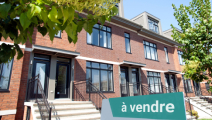Backyard pool design: from regulations to inspiration
Dreaming of turning your backyard into an outdoor oasis? Pool landscaping is the key to creating an outdoor space that’s esthetically pleasing, functional and safe. Whether it’s an aboveground pool for a quick dip or an inground pool fit for a luxury hotel, careful planning is essential to avoid unpleasant surprises and get the most out of your investment.
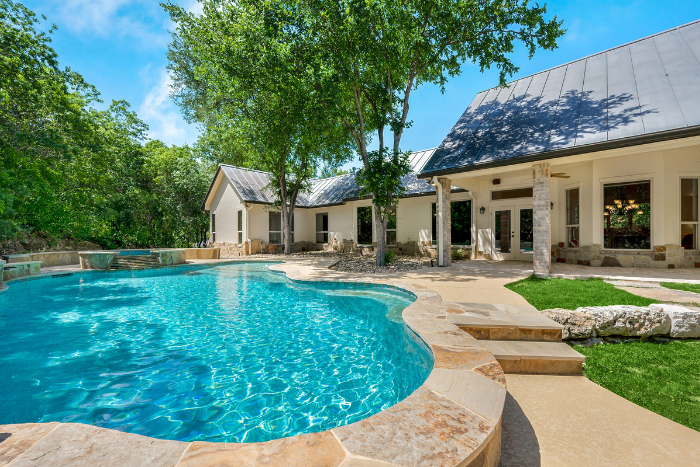
That’s why it’s important to determine which model best meets your needs, understand the regulations coming into effect in September 2025, prepare the site and design the area around the pool based on your preferences. In this comprehensive guide, you’ll find all the practical advice you need to transform your backyard into a distinctive and inviting space. Now let’s dive into the world of swimming pools!
Defining your vision: the look you want and your needs
Before even thinking about materials or installation, take the time to picture the final result. Do you want a small inground pool to cool off in, a safe, shallow children’s pool, a lap pool to exercise in or a stylish pool that’ll become the centerpiece of your backyard?
When it comes to style, there are lots of different ways to match your backyard pool design to your outdoor space:
- Contemporary: clean lines, minimalist materials and built-in lighting.
- Zen: curved lines, natural stone and soothing greenery.
- Tropical: palm trees, bright colours and exotic accessories.
- Rustic: seamless blending with existing greenery, wood and rocks.
- Mediterranean: warm colours, stone decks and Provençal-style plants.
- Asian: bridges, lanterns and bamboo.
| Tips and tricks
Think about sunlight and shaded areas: with proper placement of the pool, you can make the most of the sun’s rays. |
Explore even more ideas and inspiration for your backyard with these trendy suggestions.
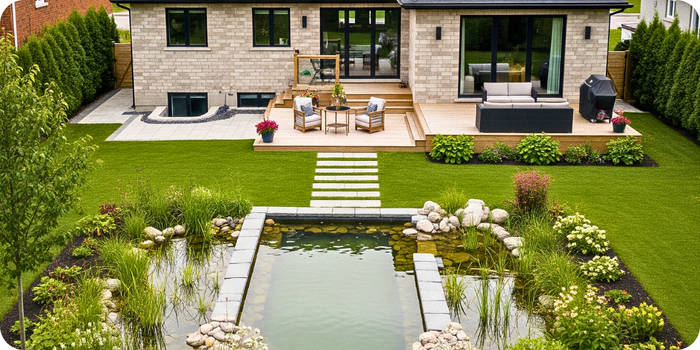
Technical aspects and regulations for pools in Quebec
Before installing your pool, it’s important to be aware of the applicable regulations in Quebec, which are designed above all to ensure safety and protect your investment.
Here are the main aspects to consider:
- Setbacks: Each municipality sets a minimum distance between the pool, buildings and property boundaries.
- Fences and secure access: With a few exceptions, all pools must be surrounded by an enclosure that meets the following requirements to lower the risk of drowning:
- Minimum height of 1.2 metres
- Enclosure that can’t be climbed (no gripping points or protruding elements)
- Maximum spacing between bars: 10 cm
- Gates equipped with locks and self-closing mechanisms
- Water management: Proper drainage helps prevent water from accumulating around the pool, reducing the risk of erosion and damage.
- Safe circulation: Be sure to leave enough clearance around the pool and use non-slip materials to prevent falls. Paving stones, treated wood, resistant composites and textured slabs are options to consider.
- Permits: Most municipalities require a permit before installing a pool. Check with your City to find out the exact steps to take.
To understand your safety obligations and avoid violations, learn about provincial requirements for securing your residential pool and your responsibilities as a pool owner.
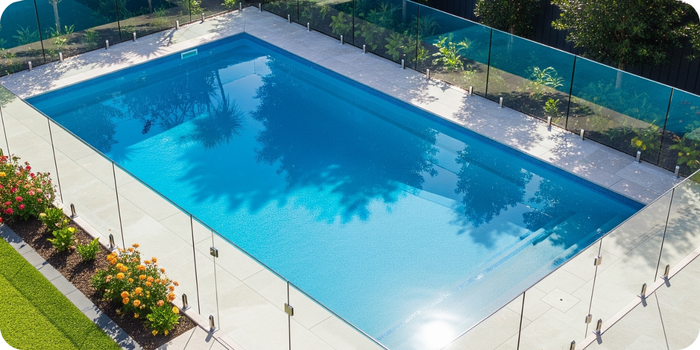
| Tips and tricks Notify your insurer before you install your pool: it can affect your home insurance premium. Properly declaring it will protect you in the event of an incident. |
Type of pool and materials to choose
The type of pool you choose will depend on your budget, the space available and your preferences in terms of maintenance and style. Here’s what you need to know:
Inground pool
Inground pools, which are made of concrete and fibreglass, offer a high-end look and high durability. They require significant excavation work but are ideal for a custom design.
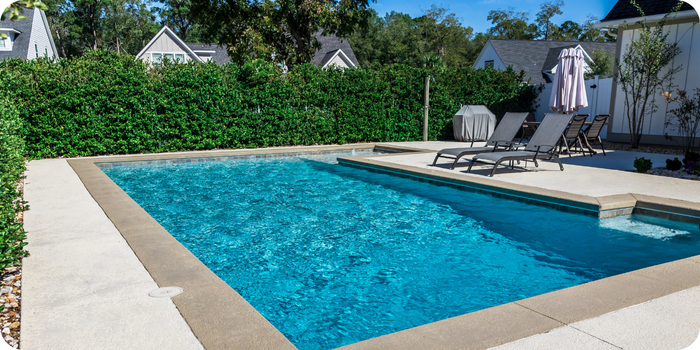
Semi-inground pool
Semi-inground pools are a middle-ground option that allows you to install an aboveground pool on sloping ground or achieve a more built-in look. They have a steel or resin frame similar to that used for aboveground pools.
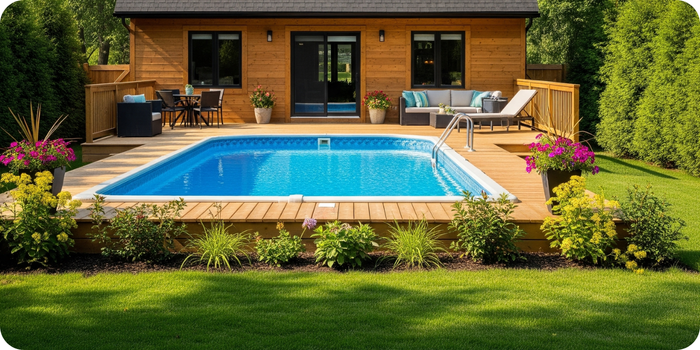
Aboveground pool
Aboveground pools, which are available in steel, resin or hybrid frames, are versatile, budget-friendly and perfectly suited to small yards. This said, it’s important to choose a pool made from quality materials, with a sturdy frame and strong top surround, to make sure it lasts and you get the most out of your investment.
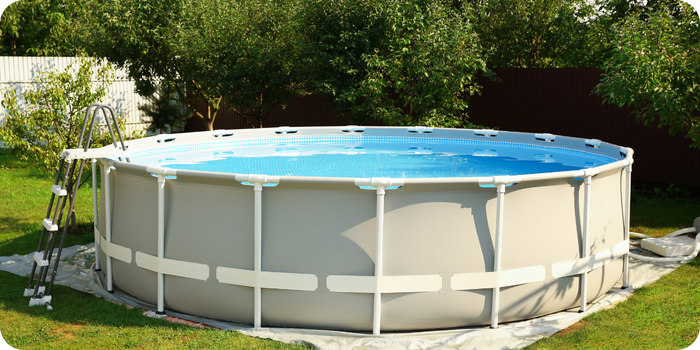
Natural swimming pool
Natural pools, also known as bio pools, use a biological filtration system with a waterproof membrane, purifying plants and a regeneration basin. They provide a unique esthetic that blends perfectly into nature, but they require specialized maintenance.
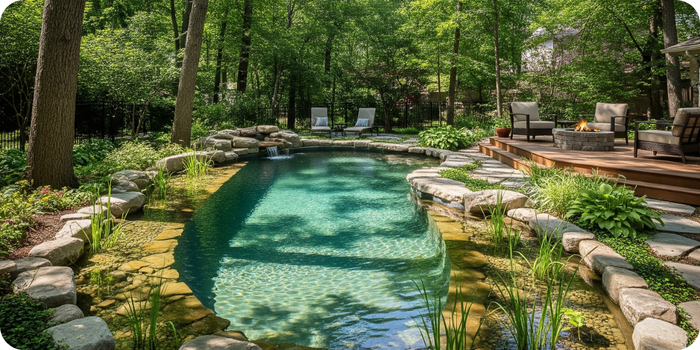
|
|
||||
|
|
Inground pool |
Semi-inground pool |
Aboveground pool |
Natural pool |
|
Advantages |
Durable, high-end |
Suitable for various terrains |
Versatile, economical |
Eco-friendly, esthetically pleasing |
|
Disadvantages |
High cost, excavation |
Less sturdy than an inground pool |
Shorter lifespane |
Specialized maintenance |
|
Lifespan |
Variable |
|||
|
Approximate cost |
Between $20,000 and $45,000 |
Starting at $10,000 |
Between $4,000 and $12,000 |
|
Note: The prices shown are for information purposes only. They can vary based on a number of factors, including site preparation, chosen materials, pool dimensions and installation costs.
| Tips and tricks Protect your investment! Inground pools come with separate warranties for the structure (20 to 50 years), the installation (5 to 25 years) and the liner (10 to 15 years). |
The different pool components
To make sure your pool has crystal-clear water and is comfortable to use, it’s important to choose the right components for your needs:
- Filtration: Filtration is key to keeping your water clean. You can choose between a sand filter or cartridge filter. Sand filters are hardwearing and easy to maintain, while cartridge filters provide a finer filtration.
- Water treatment: The choice between a chlorine or saltwater pool affects swimming comfort and budget. A saltwater system is gentler on the skin and eyes, and requires fewer chemicals, but the initial installation cost is higher than that of a chlorine system.
- Heating: If you’re looking to extend the swimming season while keeping your energy costs under control, consider a heat pump or solar heating system. A heat pump combined with a variable-speed pump can reduce heating costs by up to 85% compared with a conventional system. To maximize savings, lowering the water temperature by just 2°C can save you around 25%. Adding a solar blanket can also reduce heat loss by up to 45%.
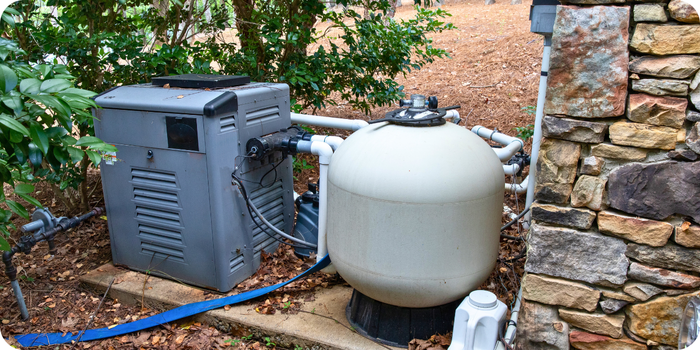
Pool installation: essential tips before starting the work
Before you take the plunge, here’s what you need to know to get your installation off to a good start.
- Should I install my swimming pool myself or hire a professional? Installing an inground or semi-inground pool involves complex steps, such as connecting the plumbing. You can install an aboveground pool by yourself if you’re handy, but using an installation service simplifies the task and ensures it’s compliant. You can ask your pool supplier or call on a trusted renovation contractor to assist you.
- When’s the best time to install my pool? The work is usually done in the spring or early summer, when the ground is dry and firm, to avoid delays due to heavy rainfall or wet soil.
- Do I need a certificate of location? Before you start the work, make sure your certificate of location is up to date and the planned design complies with municipal by-laws. This will avoid disputes or costly modifications after the fact.
- Do I need to prepare my yard ahead of time? Before the installation, carefully mark out the placement for optimal positioning, then level and excavate the ground if necessary to provide a solid base. Depending on the agreement with your installer, you may be responsible for certain tasks, such as removing the grass or cleaning up the site.
- How much time will it take? Installing an aboveground pool can take one to three days, while installing an inground pool can take several weeks, depending on the complexity of the project, site preparation and any municipal inspections required.
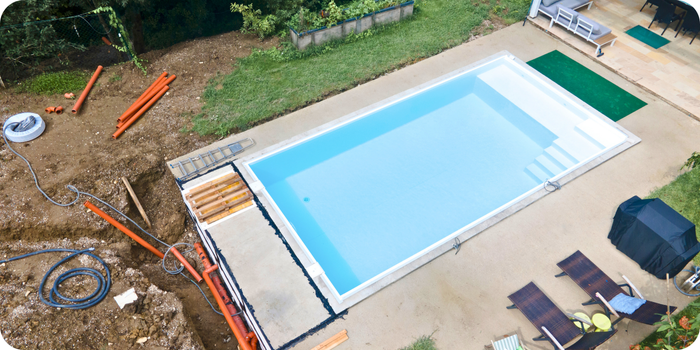
The essentials for successful pool landscaping
Well thought-out landscaping around your pool doesn’t just make your backyard more enjoyable, it also makes it safer and more attractive.
- Shady areas: Protect yourself from the sun with a pergola, shade sail, umbrella or gazebo so you can enjoy swimming even at the hottest times of day.
- Lounging area: Create a cozy space with outdoor furniture – sectionals, lounge chairs, a hammock or even an outdoor bed, and add a fireplace to extend the evenings.
- Lighting: Make your pool safe and beautiful with recessed lighting, solar lights and underwater LEDs for a cozy atmosphere in the evening.
- Privacy: Add privacy with decorative panels and hedges.
- Greenery and décor: Use potted plants and flowerbeds around the fence to soften the landscape and create an oasis.
- Storage: Keep your space tidy with a chest and wall hooks to store toys, towels, and accessories.
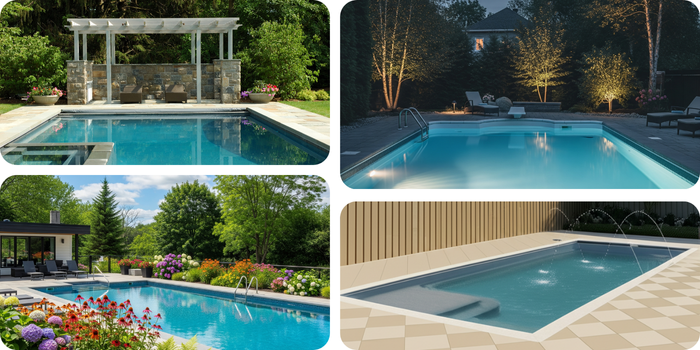
Maintaining your pool to enjoy it for a long time
Regular maintenance is essential to preserve water quality and extend your pool’s lifespan.
- Spring opening: As soon as the nice weather’s back, do a thorough cleaning, restart the filtration system and adjust the chemicals to balance the water pH. Good spring maintenance reduces the risk of the pool water turning green over the summer.
- Summer maintenance: Test the water weekly and adjust products as needed. Clean the pool with a pool vacuum and check the filtration system regularly to make sure it’s working properly.
- Fall closing: Before the frost sets in, lower the water level, dismantle and store accessories, clean the pool thoroughly and install a winter cover to protect your installation.
- Products and tools: You’ll need maintenance products such as chlorine or salt, a vacuum, test strips to check the water and a budget for periodically replacing the filter or servicing the pool pump and heater.
- Annual maintenance costs: Depending on the size and type of pool you have, expect to spend between $400 and $800 per year for chemicals, electricity and small accessories, keeping in mind that inground pools often require a higher budget than aboveground models.
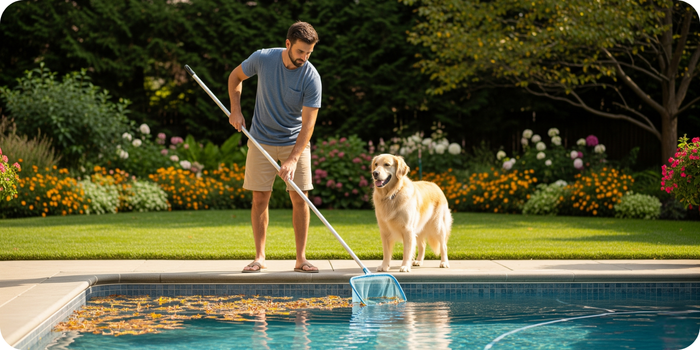
Designing your pool: get inspired
Once you’ve explored the main steps of a landscaping project, why not take a look at how other homeowners have transformed their yards? Whether it’s choosing materials, designing lounging areas or incorporating greenery, you can find lots of great ideas that you can reproduce at home. Use our “Pool” filter to easily find these designs.
FAQ
1. What’s the starting price to install a swimming pool?
The minimum cost varies depending on the type of pool and materials used. An aboveground pool is the most affordable option, with prices starting at around $4,000, while an inground pool starts at around $20,000. Semi-inground pools typically start at $10,000, and natural pools can easily reach $30,000.
2. Can a pool really increase the resale value of a home?
Yes. In many cases, a well-maintained and tastefully designed pool can make a property more attractive to some buyers. However, the added value depends on the local market and the type of pool; in some cases, it may even limit the pool of potential buyers due to maintenance costs.
3. Is it mandatory to install a fence for an aboveground pool?
Yes. In Quebec, the law requires that an aboveground pool be equipped with a compliant fence if the walls are less than 1.2 m high or if it’s easy to access from a deck or permanent structure. In addition, all pools installed since November 2010 must comply with these rules, and those built before that date must be brought up to code by September 30, 2025, as specified in the safety requirements for residential pools.

See also:
How to install, maintain and close an above-ground pool
7 outdoor trends for your dream yard
The complete home renovation guide: tips, steps and budget
 The Largest Number of Homes for Sale
The Largest Number of Homes for Sale



